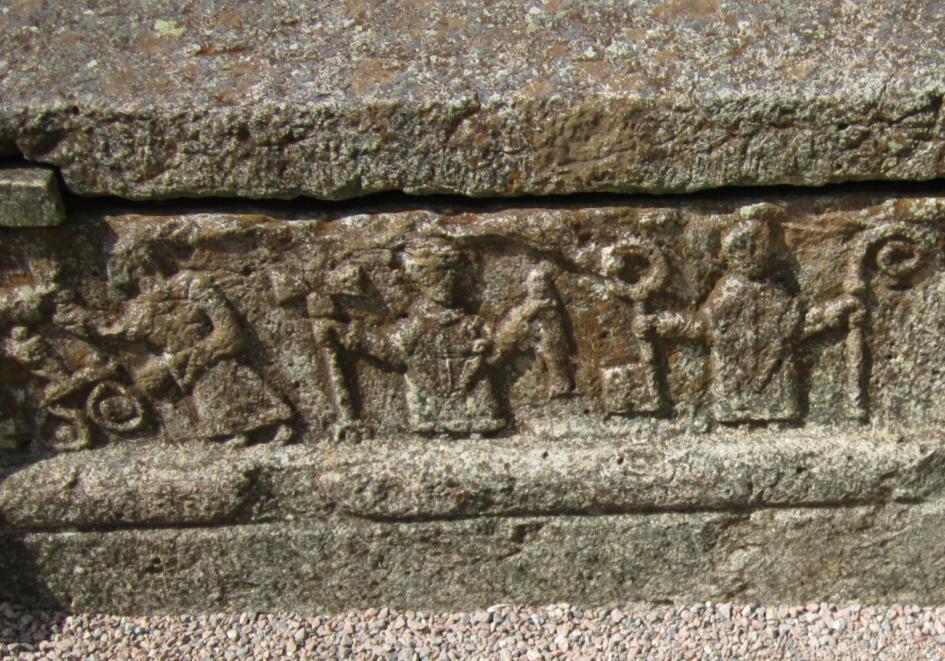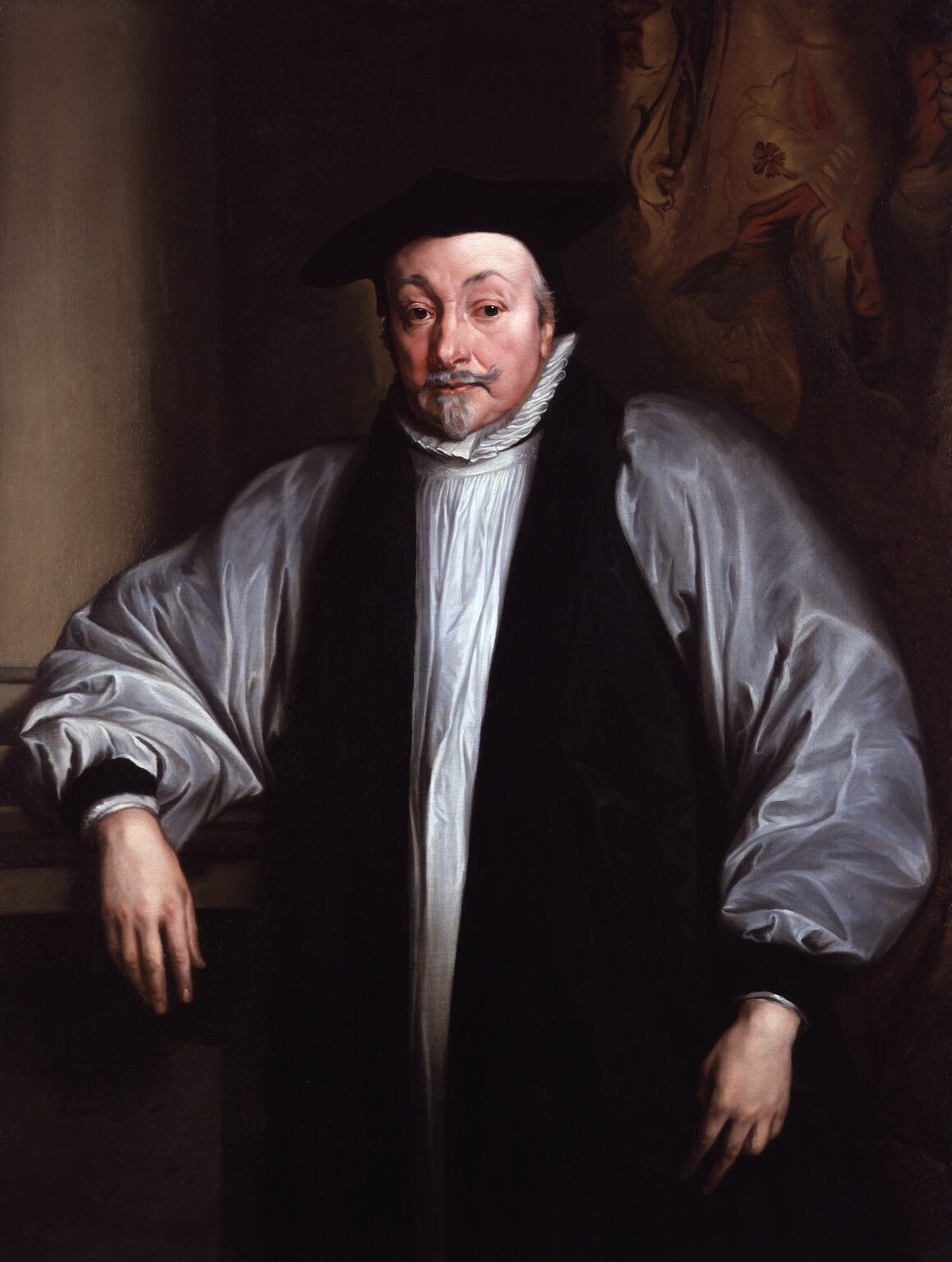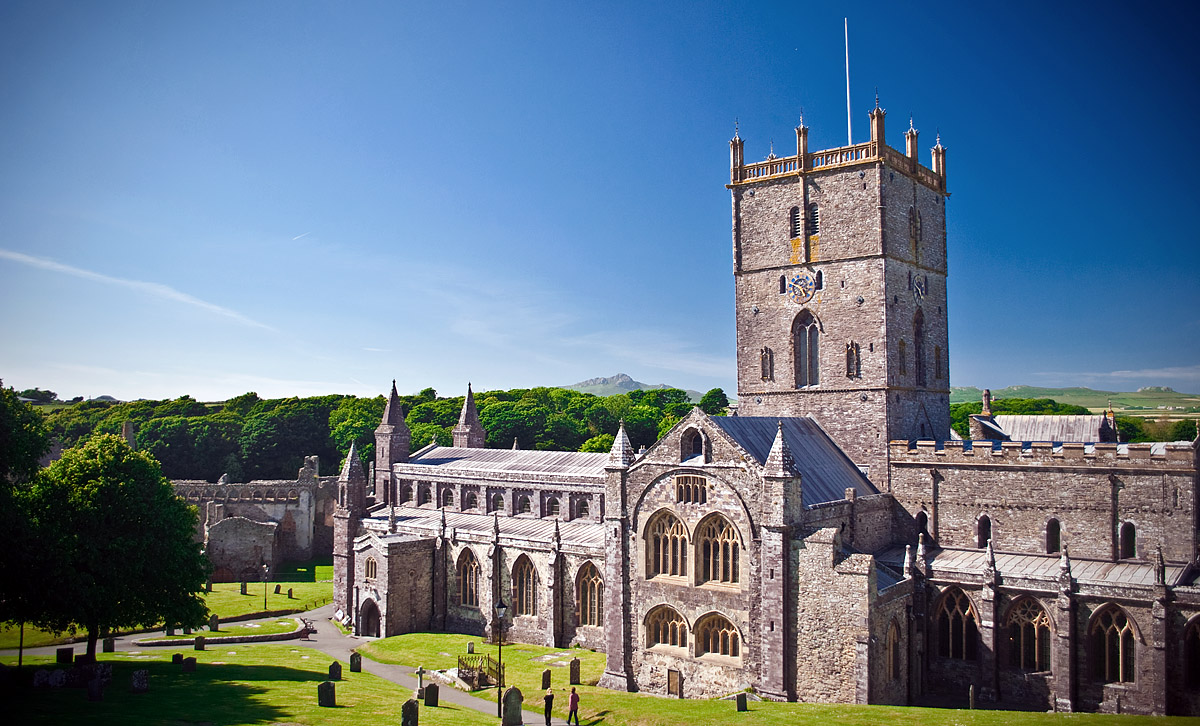|
John Gilbert (bishop Of St David's)
John Gilbert (died 1397) was a medieval Bishop of Bangor, Bishop of Hereford and Bishop of St. David's. Gilbert was nominated to Bangor on 17 March 1372.Fryde, et al. ''Handbook of British Chronology'' p. 291 Gilbert was translated to Hereford on 12 September 1375.Fryde, et al. ''Handbook of British Chronology'' p. 251 Gilbert was Lord High Treasurer The post of Lord High Treasurer or Lord Treasurer was an English government position and has been a British government position since the Acts of Union of 1707. A holder of the post would be the third-highest-ranked Great Officer of State in ... from 1386 to 1389 and then again from late 1389 to 1391.Fryde, et al. ''Handbook of British Chronology'' p. 106 Gilbert was translated to St. David's on 5 May 1389 and died on 28 July 1397.Fryde, et al. ''Handbook of British Chronology'' p. 297 Citations References * 1397 deaths Bishops of Bangor Bishops of Hereford Bishops of St Davids 14th-cen ... [...More Info...] [...Related Items...] OR: [Wikipedia] [Google] [Baidu] |
Bishop Of St
A bishop is an ordained clergy member who is entrusted with a position of Episcopal polity, authority and oversight in a religious institution. In Christianity, bishops are normally responsible for the governance of dioceses. The role or office of bishop is called episcopacy. Organizationally, several Christian denominations utilize ecclesiastical structures that call for the position of bishops, while other denominations have dispensed with this office, seeing it as a symbol of power. Bishops have also exercised political authority. Traditionally, bishops claim apostolic succession, a direct historical lineage dating back to the original Twelve Apostles or Saint Paul. The bishops are by doctrine understood as those who possess the full Priest#Christianity, priesthood given by Jesus in Christianity, Jesus Christ, and therefore may ordain other clergy, including other bishops. A person ordained as a deacon, priest (i.e. presbyter), and then bishop is understood to hold the fulln ... [...More Info...] [...Related Items...] OR: [Wikipedia] [Google] [Baidu] |
William Courtenay
William Courtenay ( 134231 July 1396) was Archbishop of Canterbury (1381–1396), having previously been Bishop of Hereford and Bishop of London. Early life and education Courtenay was a younger son of Hugh de Courtenay, 10th Earl of Devon (died 1377), and his wife Margaret, daughter of Humphrey de Bohun, 4th Earl of Hereford and granddaughter of Edward I. He was said to have been born at the family's estate at Exminster.Lysons and LysonsParishes: Exminster – Exmouth ''Magna Britannia: volume 6: Devonshire'' Being a native of the west of England, Courtenay was educated at Stapledon Hall, Oxford, and after graduating in law was chosen chancellor of the university in 1367. Courtenay's ecclesiastical and political career began about the same time. Career Having been made prebendary of Exeter, of Wells and of York, he was consecrated bishop of Hereford on 17 March 1370,Fryde, et al. ''Handbook of British Chronology'' p. 250 was translated to the see of London on 12 Sept ... [...More Info...] [...Related Items...] OR: [Wikipedia] [Google] [Baidu] |
14th-century Italian Roman Catholic Bishops
As a means of recording the passage of time, the 14th century was a century lasting from 1 January 1301 ( MCCCI), to 31 December 1400 ( MCD). It is estimated that the century witnessed the death of more than 45 million lives from political and natural disasters in both Europe and the Mongol Empire. West Africa experienced economic growth and prosperity. In Europe, the Black Death claimed 25 million lives wiping out one third of the European population while the Kingdom of England and the Kingdom of France fought in the protracted Hundred Years' War after the death of Charles IV, King of France led to a claim to the French throne by Edward III, King of England. This period is considered the height of chivalry and marks the beginning of strong separate identities for both England and France as well as the foundation of the Italian Renaissance and Ottoman Empire. In Asia, Tamerlane (Timur), established the Timurid Empire, history's third largest empire to have been ever establish ... [...More Info...] [...Related Items...] OR: [Wikipedia] [Google] [Baidu] |
Bishops Of St Davids
A bishop is an ordained clergy member who is entrusted with a position of authority and oversight in a religious institution. In Christianity, bishops are normally responsible for the governance of dioceses. The role or office of bishop is called episcopacy. Organizationally, several Christian denominations utilize ecclesiastical structures that call for the position of bishops, while other denominations have dispensed with this office, seeing it as a symbol of power. Bishops have also exercised political authority. Traditionally, bishops claim apostolic succession, a direct historical lineage dating back to the original Twelve Apostles or Saint Paul. The bishops are by doctrine understood as those who possess the full priesthood given by Jesus Christ, and therefore may ordain other clergy, including other bishops. A person ordained as a deacon, priest (i.e. presbyter), and then bishop is understood to hold the fullness of the ministerial priesthood, given responsibility by ... [...More Info...] [...Related Items...] OR: [Wikipedia] [Google] [Baidu] |
Bishops Of Hereford
The Bishop of Hereford is the Ordinary (officer), ordinary of the Church of England Diocese of Hereford in the Province of Canterbury. The episcopal see is centred in the Hereford, City of Hereford where the bishop's seat (''cathedra'') is in the Hereford Cathedral, Cathedral Church of Saint Mary and Saint Ethelbert. The diocese was founded for the minor sub-kingdom of the Magonsæte in 676. It now covers the whole of the county of Herefordshire, southern Shropshire and a few parishes in Worcestershire, Powys and Monmouthshire. The arms of the see are ''gules, three leopard's faces reversed jessant-de-lys or'', which were the personal arms of Bishop Thomas de Cantilupe (d.1282). Until 1534 the Diocese of Hereford was in full communion with the Roman Catholic Church and two of its bishops were canonisation, canonised. During the English Reformation the bishops of England and Wales conformed to the independent Church of England under Henry VIII of England, Henry VIII and Edward VI ... [...More Info...] [...Related Items...] OR: [Wikipedia] [Google] [Baidu] |
Bishops Of Bangor
A bishop is an ordained clergy member who is entrusted with a position of authority and oversight in a religious institution. In Christianity, bishops are normally responsible for the governance of dioceses. The role or office of bishop is called episcopacy. Organizationally, several Christian denominations utilize ecclesiastical structures that call for the position of bishops, while other denominations have dispensed with this office, seeing it as a symbol of power. Bishops have also exercised political authority. Traditionally, bishops claim apostolic succession, a direct historical lineage dating back to the original Twelve Apostles or Saint Paul. The bishops are by doctrine understood as those who possess the full priesthood given by Jesus Christ, and therefore may ordain other clergy, including other bishops. A person ordained as a deacon, priest (i.e. presbyter), and then bishop is understood to hold the fullness of the ministerial priesthood, given responsibility by ... [...More Info...] [...Related Items...] OR: [Wikipedia] [Google] [Baidu] |
1397 Deaths
Year 1397 ( MCCCXCVII) was a common year starting on Monday (link will display the full calendar) of the Julian calendar. Events January–December * January – Mircea I takes back the throne of Wallachia. * February 10 – John Beaufort becomes Earl of Somerset in England. * June 6 – Richard Whittington is nominated as Lord Mayor of London for the first time. * July 12 – Richard II of England attempts to reassert authority over his kingdom by arresting members of a group of powerful barons known as the Lords Appellant. * July 17 – Eric of Pomerania is crowned in Kalmar (Sweden) as ruler of the Kalmar Union, a personal union of the three kingdoms of Denmark, Norway (with Iceland, Greenland, the Faroe Islands, Shetland and Orkney) and Sweden (including Finland and Åland) engineered by Queen Margaret I of Denmark, his great-aunt and adoptive mother, who retains ''de facto'' power in the realm. * September 25 – The Treaty of Kalmar is sig ... [...More Info...] [...Related Items...] OR: [Wikipedia] [Google] [Baidu] |
Bishop Of St David's
The Bishop of St Davids is the Ordinary (officer), ordinary of the Church in Wales Diocese of St Davids. The succession of bishops stretches back to Saint David who in the 6th century established his seat in what is today the St Davids, city of St Davids in Pembrokeshire, founding St David's Cathedral, St Davids Cathedral. The current bishop of St Davids is Joanna Penberthy, since the Confirmation of bishops, confirmation on 30 November 2016 of her Canonical election, election.Church in Wales — Election of Wales’ first woman bishop is confirmed (Accessed 5 January 2017) History The history of the diocese of St Davids is traditionally traced to that saint in the latter half of the 6th century. Records of t ...[...More Info...] [...Related Items...] OR: [Wikipedia] [Google] [Baidu] |
Adam Houghton
Adam Houghton (died 13 February 1389), also known as Adam de Houghton, was Bishop of St David's from 1361 until his death and Lord Chancellor of England from 1377 to 1378. A Doctor of Laws and an advocate of the Court of Arches, he was also sent on missions to France for King Edward III. In April 1377, with the Caroline War going badly for the English, Edward sent Houghton to seek a peace settlement with Charles V of France, but in June Edward died, and Houghton was recalled. In 1380 he helped to negotiate the marriage of King Richard II to Anne of Bohemia. Early life It was long reported, by a local tradition dating at least from the 16th century, that Houghton had been born in Dewisland, or the immediate neighbourhood of St David's, although from his name he is plainly of an English or Anglo-Norman family.William Basil Jones, Edward Augustus Freeman, ''The history and antiquities of Saint David's'' (1856)p.303/ref> There is a long-standing local claim that the farm of Caerfori ... [...More Info...] [...Related Items...] OR: [Wikipedia] [Google] [Baidu] |
Thomas Trevenant
John Trevenant (alternatively Trefnant or Tresnant; in some sources named Thomas Trevenant; died 29 March 1404) was a medieval Bishop of Hereford of Welsh descent. He was nominated on 5 May 1389 and consecrated on 20 June 1389.Fryde, et al. ''Handbook of British Chronology'' p. 251 Trevenant was from the village Trefnant in North Wales. According to R. G. Davies in the Oxford Dictionary of National Biography, Richard II of England "told the pope that Trefnant was related 'in a close degree' to certain nobles 'assisting at our side, presumed to refer to the Lords Appellant and specifically the earls of Arundel Earl of Arundel is a title of nobility in England, and one of the oldest extant in the English peerage. It is currently held by the Duke of Norfolk, and is used (along with the Earl of Surrey) by his heir apparent as a courtesy title. The ea .... In the deposition of Richard II, Trevenant and Richard Scrope played a central part. Citations References * * * '' ... [...More Info...] [...Related Items...] OR: [Wikipedia] [Google] [Baidu] |
John Swaffham
John is a common English name and surname: * John (given name) * John (surname) John may also refer to: New Testament Works * Gospel of John, a title often shortened to John * First Epistle of John, often shortened to 1 John * Second Epistle of John, often shortened to 2 John * Third Epistle of John, often shortened to 3 John People * John the Baptist (died c. AD 30), regarded as a prophet and the forerunner of Jesus Christ * John the Apostle (lived c. AD 30), one of the twelve apostles of Jesus * John the Evangelist, assigned author of the Fourth Gospel, once identified with the Apostle * John of Patmos, also known as John the Divine or John the Revelator, the author of the Book of Revelation, once identified with the Apostle * John the Presbyter, a figure either identified with or distinguished from the Apostle, the Evangelist and John of Patmos Other people with the given name Religious figures * John, father of Andrew the Apostle and Saint Peter * Pope John ... [...More Info...] [...Related Items...] OR: [Wikipedia] [Google] [Baidu] |
Richard Metford
Richard is a male given name. It originates, via Old French, from Old Frankish and is a compound of the words descending from Proto-Germanic ''*rīk-'' 'ruler, leader, king' and ''*hardu-'' 'strong, brave, hardy', and it therefore means 'strong in rule'. Nicknames include "Richie", "Dick", "Dickon", " Dickie", "Rich", "Rick", "Rico", "Ricky", and more. Richard is a common English, German and French male name. It's also used in many more languages, particularly Germanic, such as Norwegian, Danish, Swedish, Icelandic, and Dutch, as well as other languages including Irish, Scottish, Welsh and Finnish. Richard is cognate with variants of the name in other European languages, such as the Swedish "Rickard", the Catalan "Ricard" and the Italian "Riccardo", among others (see comprehensive variant list below). People named Richard Multiple people with the same name * Richard Andersen (other) * Richard Anderson (other) * Richard Cartwright (other) * Ri ... [...More Info...] [...Related Items...] OR: [Wikipedia] [Google] [Baidu] |





